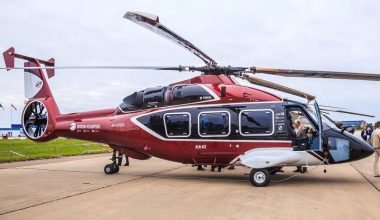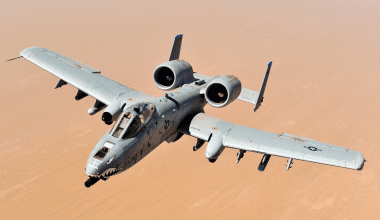The ability of artificial intelligence to perform tasks that traditionally required human cognitive functions has made it particularly useful for aviation professionals, as the deployment of aviation software development services can save companies time and money, while potentially eliminating human error and enabling tasks to be completed quickly, any time of the day.
Artificial Intelligence (AI) and its subfields, like machine learning, computer vision, predictive analytics, and 3D printing, are fundamental enablers for aviation. These technologies help aviation organizations achieve several objectives:
- Increasing flight efficiency
- Improving operational performance and throughput
- Boosting quality
- Maximizing capacity utilization
- Eliminating order backlogs
- Reducing CO2 emissions

Conversely, the cloud increases technology adoption and accelerates automation by integrating AI-based solutions into core processes.
The European Aviation AI High-Level Grouping is made up of leaders from the European aviation sector, Civil Aeronautics Board (CAB), Federal Aviation Administration (FAA), Temporary Flight Restrictions (TFR), Advisory Circulars (AC), and other industry regulatory standards. They were all created to explore and expand the applications of AI in aviation alongside monitoring other core Air Missions. It seeks to maximize the adoption of digital tools by creating an AI roadmap. Undoubtedly, this initiative will boost the widespread application of AI frameworks in the aviation industry.
AI systems are transforming end-to-end operations – the assembly line, maintenance, repair and overhaul hangar, supply chain, customer service, business processes, and flight experience, both for the crew and the passengers. In addition, AI-aided design solutions help OEMs replace CO2- and material-intensive production methods with sustainable alternatives such as composite materials.
Also Read: Do my English homework for me
At the same time, machine learning models analyze real-world engineering and fleet data to improve AI applications. The results of the analysis of big data, being more precise than statistical analyses, make it possible to better respond to the problems of safety, fatigue, and reaction to the unforeseen.
Cognitive solutions minimize human intervention.
These solutions applied across the entire value chain support the implementation of human factors engineering inside and outside the cockpit. AI/machine learning systems allow design and production teams to set target requirements and visualize results, whether corrosion detection or landing guidance. Condition-based MRO services (Maintenance, Repair, and Overhaul Services) improve structural integrity and aircraft life. However, these autonomous systems need real-time data for decision-making and automated actions.
Data is a fundamental asset for building and training cognitive software. Therefore, infinitely scalable computing infrastructure is essential to house, scale, and process large datasets. In addition, scale computing/processing power and a highly reliable development environment are required to use simulation tools and digital platforms to develop prototypes, create seamless human-machine interfaces, and test applications before their integration.
Data in the cloud
The performance of AI/machine learning solutions depends on the quality and volume of data used to develop and train them. Also, a robust simulation environment is needed to perform rigorous testing.
The cloud provides a scalable and resilient system for managing historical and validation data. It also allows data scientists to recreate the operational, air traffic control, maintenance hangar, or cabin environment for testing and validation before integrating AI systems into real operations. Additionally, the cloud accelerates use case development by supporting AIOps tools, real-time collaboration between teams, and test protocols for aerial systems, mechanical parts, and critical equipment.

Supply chain disruptions demand near real-time visibility across the entire ecosystem. In addition to financial losses, OEMs face reputational risks due to dysfunctional supply chains. The cloud enables aviation parts manufacturers, suppliers, and distributors to mitigate risk through 3D printing. Additive manufacturing can be used in upstream and downstream supply chains.
Additionally, cloud-hosted sourcing solutions enable a collaborative approach to sourcing 3D-printed parts. Seamless collaboration between aviation OEMs, suppliers, airlines, M&S companies, and technology providers enables on-demand sourcing of critical components, flight-ready features, and custom tooling. These intelligent, lean supply chains dramatically reduce lead times while streamlining inventory.
Cloud and AI-powered aviation software development services and management goes beyond an intelligent fleet and smart maintenance. For example, robotic arms in production lines drive productivity and quality, ergonomic systems optimize the layout of aircraft as well as manufacturing and MRO facilities, and IIoT solutions maximize energy efficiency and labor utilization work. Additionally, the cloud is helping manufacturers leverage the ultra-high-speed connectivity of 5G networks to improve in-flight diagnostics and reduce turnaround times for ground operations.
OEMs can deploy algorithms at scale on the cloud to build resilient aircraft fleets, make small jets more affordable and strengthen safety. Additionally, data-driven autonomous systems simplify operations while mitigating the environmental impact of aviation.
AI in the air: challenges to be met?
Despite the abundance and use of data science, big data, and machine learning in the air industry, artificial intelligence integration in this sector has some limits. These barriers include the lack of flexibility of current aging IT systems. As a result, adapting these technologies to AI remains a complex task, a challenge that can be overcome with our growing custom aviation software development and AI services for aviation businesses.






